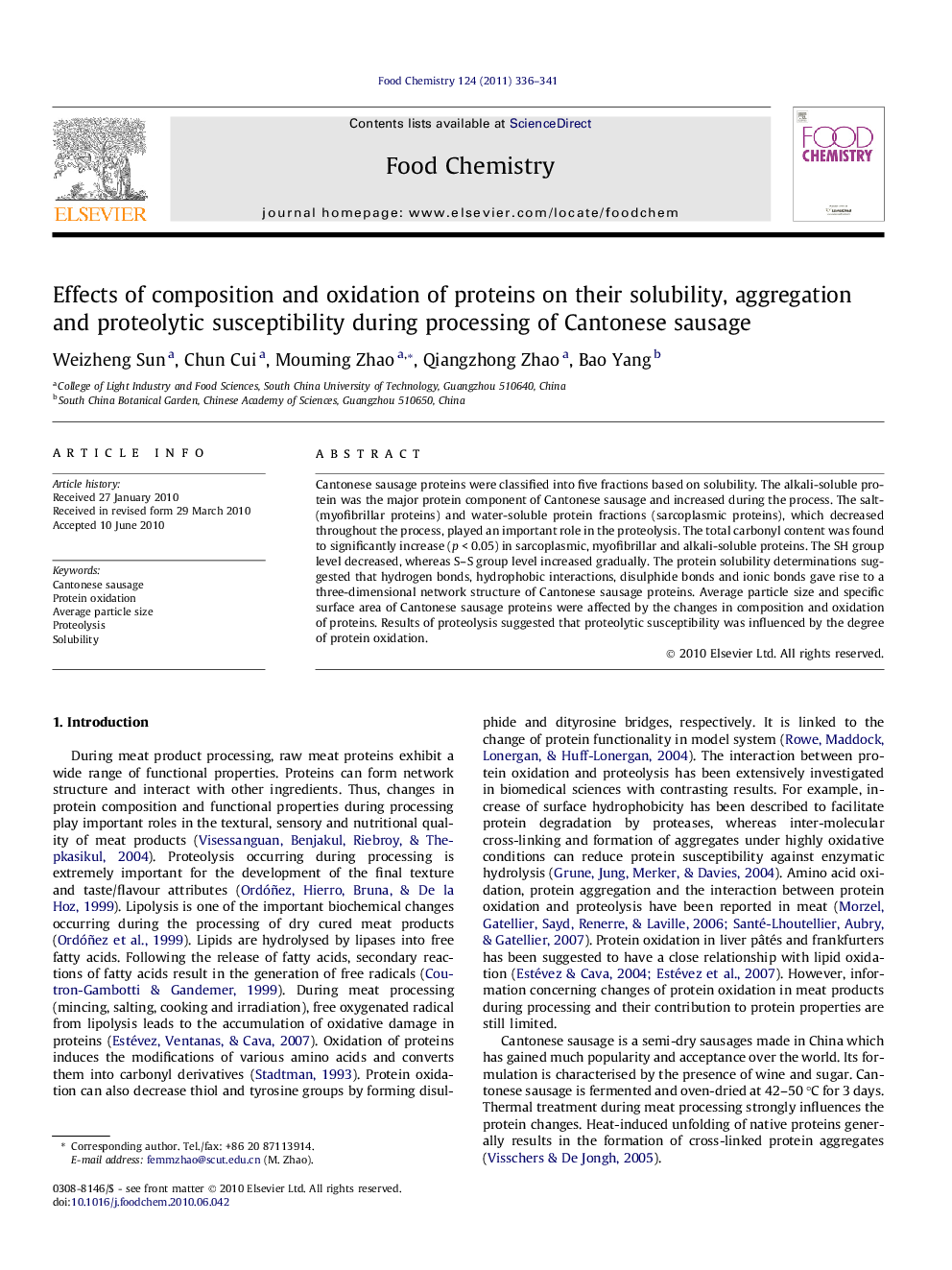| Article ID | Journal | Published Year | Pages | File Type |
|---|---|---|---|---|
| 1187665 | Food Chemistry | 2011 | 6 Pages |
Cantonese sausage proteins were classified into five fractions based on solubility. The alkali-soluble protein was the major protein component of Cantonese sausage and increased during the process. The salt- (myofibrillar proteins) and water-soluble protein fractions (sarcoplasmic proteins), which decreased throughout the process, played an important role in the proteolysis. The total carbonyl content was found to significantly increase (p < 0.05) in sarcoplasmic, myofibrillar and alkali-soluble proteins. The SH group level decreased, whereas S–S group level increased gradually. The protein solubility determinations suggested that hydrogen bonds, hydrophobic interactions, disulphide bonds and ionic bonds gave rise to a three-dimensional network structure of Cantonese sausage proteins. Average particle size and specific surface area of Cantonese sausage proteins were affected by the changes in composition and oxidation of proteins. Results of proteolysis suggested that proteolytic susceptibility was influenced by the degree of protein oxidation.
